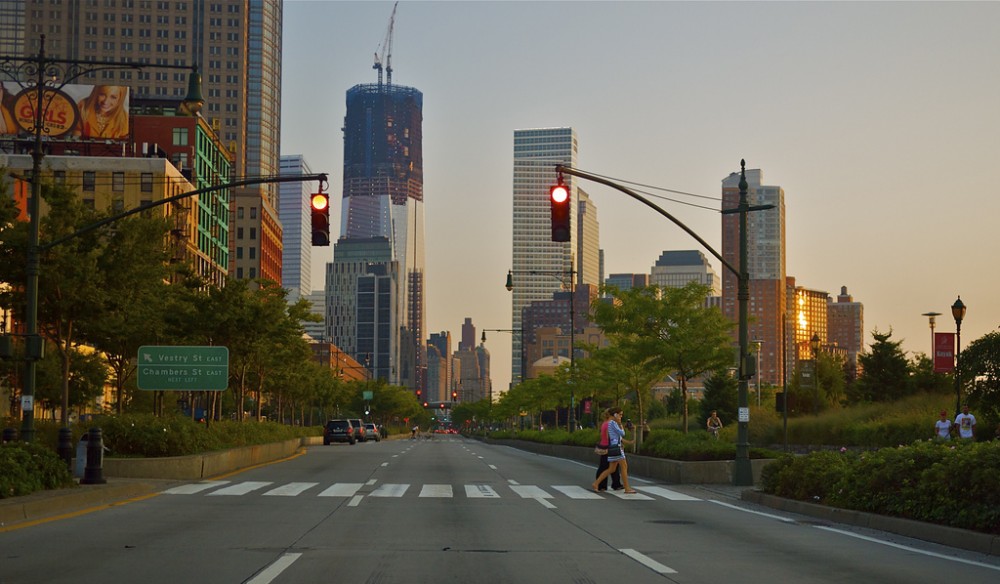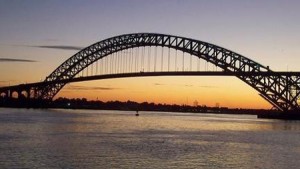The Bayonne Bridge is the fourth-longest steel arch bridge in the world, and was the longest in the world at the time of its completion. It connects Bayonne, New Jersey with Staten Island, New York, spanning the Kill Van Kull which is a very active route for cargo ships to ports in New Jersey. Its clearance is 151 ft, but that is no longer large enough for the new cargo ships that have increased there size and height to almost 200 ft.
In order to tackle this problem the Port Authority of New York & New Jersey (PANYNJ) has approved plans to raise the elevation of the bridge to 215 ft without tearing down the bridge. It is a national Historic Civil Engineering Landmark, so the Port Authority did not have much of a choice. It is quite fascinating in the video on how they would complete such an endeavor.
Not only will the bridge be raised to secure continued shipping operations, but additional benefits for the public would also be created. The existing bridge has a 6 ft walkway, 10 ft wide travel lanes (two in each direction), with neither shoulders nor a median divider. After the project is completed there will be 12 ft wide travel lanes, 6.5 ft right-hand shoulders, and a median divider for improved safety and to extend the life of the bridge. Furthermore, a new toll gantry will be installed, allowing for quicker travel over the bridge and there will be a 12 ft wide bikeway/walkway for the entire length of the bridge with access ramps replacing existing stairs.


Just curious, if the bridge is simply be moved up higher, and not reconstructed with new elements that would add space and change its historic aesthetics, where is all the extra lane space coming from?
That is a great question Avi. I looked at the video and its shows that the bridge is wider than the actual road deck. Check this picture at http://en.wikipedia.org/wiki/File:Bayonne_Bridge_by_Dave_Frieder.jpg It is more clear. The rationale of not making the road deck flush with the cables is interesting. Perhaps it was because of the cost or having shoulders, a median divider and 12 ft wide lanes were unnecessary for the time. After all, this bridge opened in 1931.
Bayonne Bridge is not the only bridge in the NYC area that is to be reconstructed. Tappan Zee Bridge is aging and there are already plans to replace it…several alternatives are being considered.